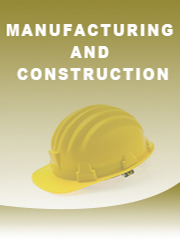Report overview
Regenerative braking system (RBS) is a mechanism that uses a generator to recover kinetic energy while braking. In conventional vehicles, most of the kinetic energy generated during braking is converted into heat and is dissipated into the environment. RBS helps in converting the generated heat into electrical energy and further store it in an energy storage system such as flywheel, batteries, and ultra-capacitors.
This report aims to provide a comprehensive presentation of the global market for Regenerative Braking Systems, with both quantitative and qualitative analysis, to help readers develop business/growth strategies, assess the market competitive situation, analyze their position in the current marketplace, and make informed business decisions regarding Regenerative Braking Systems. This report contains market size and forecasts of Regenerative Braking Systems in global, including the following market information:
Global Regenerative Braking Systems Market Revenue, 2018-2023, 2024-2029, ($ millions)
Global Regenerative Braking Systems Market Sales, 2018-2023, 2024-2029, (Units)
Global top five Regenerative Braking Systems companies in 2022 (%)
The global Regenerative Braking Systems market was valued at US$ 82 million in 2022 and is projected to reach US$ 193.1 million by 2029, at a CAGR of 13.1% during the forecast period. The influence of COVID-19 and the Russia-Ukraine War were considered while estimating market sizes.
Global regenerative braking systems key players include ABB, Siemens, Toshiba, etc. Global top 5 players hold a share about 60%.
Asia Pacific is the largest market, with a share about 50%, followed by Europe, having a total share about 40 percent.
In terms of product, battery energy storage is the largest segment, with a share about 90%. And in terms of application, the largest application is railroad and public transformation, followed by industry equipment.
We surveyed the Regenerative Braking Systems manufacturers, suppliers, distributors and industry experts on this industry, involving the sales, revenue, demand, price change, product type, recent development and plan, industry trends, drivers, challenges, obstacles, and potential risks.
Total Market by Segment:
Global Regenerative Braking Systems Market, by Type, 2018-2023, 2024-2029 ($ Millions) & (Units)
Global Regenerative Braking Systems Market Segment Percentages, by Type, 2022 (%)
Battery Energy Storage
Ultracapacitor Energy Storage
Global Regenerative Braking Systems Market, by Application, 2018-2023, 2024-2029 ($ Millions) & (Units)
Global Regenerative Braking Systems Market Segment Percentages, by Application, 2022 (%)
Railroad and Public Transformation
Industry Equipment
Global Regenerative Braking Systems Market, By Region and Country, 2018-2023, 2024-2029 ($ Millions) & (Units)
Global Regenerative Braking Systems Market Segment Percentages, By Region and Country, 2022 (%)
North America
US
Canada
Mexico
Europe
Germany
France
U.K.
Italy
Russia
Nordic Countries
Benelux
Rest of Europe
Asia
China
Japan
South Korea
Southeast Asia
India
Rest of Asia
South America
Brazil
Argentina
Rest of South America
Middle East & Africa
Turkey
Israel
Saudi Arabia
UAE
Rest of Middle East & Africa
Competitor Analysis
The report also provides analysis of leading market participants including:
Key companies Regenerative Braking Systems revenues in global market, 2018-2023 (Estimated), ($ millions)
Key companies Regenerative Braking Systems revenues share in global market, 2022 (%)
Key companies Regenerative Braking Systems sales in global market, 2018-2023 (Estimated), (Units)
Key companies Regenerative Braking Systems sales share in global market, 2022 (%)
Further, the report presents profiles of competitors in the market, key players include:
ABB
Siemens
Toshiba
Hitachi
Kawasaki
Hyundai Rotem
Alstom
Bombardier
Wabtec
CRRC
Beijing Huali Chuangtong Technology
Beijing Dinghan
Chenda Electric
Outline of Major Chapters:
Chapter 1: Introduces the definition of Regenerative Braking Systems, market overview.
Chapter 2: Global Regenerative Braking Systems market size in revenue and volume.
Chapter 3: Detailed analysis of Regenerative Braking Systems manufacturers competitive landscape, price, sales and revenue market share, latest development plan, merger, and acquisition information, etc.
Chapter 4: Provides the analysis of various market segments by type, covering the market size and development potential of each market segment, to help readers find the blue ocean market in different market segments.
Chapter 5: Provides the analysis of various market segments by application, covering the market size and development potential of each market segment, to help readers find the blue ocean market in different downstream markets.
Chapter 6: Sales of Regenerative Braking Systems in regional level and country level. It provides a quantitative analysis of the market size and development potential of each region and its main countries and introduces the market development, future development prospects, market space of each country in the world.
Chapter 7: Provides profiles of key players, introducing the basic situation of the main companies in the market in detail, including product sales, revenue, price, gross margin, product introduction, recent development, etc.
Chapter 8: Global Regenerative Braking Systems capacity by region & country.
Chapter 9: Introduces the market dynamics, latest developments of the market, the driving factors and restrictive factors of the market, the challenges and risks faced by manufacturers in the industry, and the analysis of relevant policies in the industry.
Chapter 10: Analysis of industrial chain, including the upstream and downstream of the industry.
Chapter 11: The main points and conclusions of the report.
